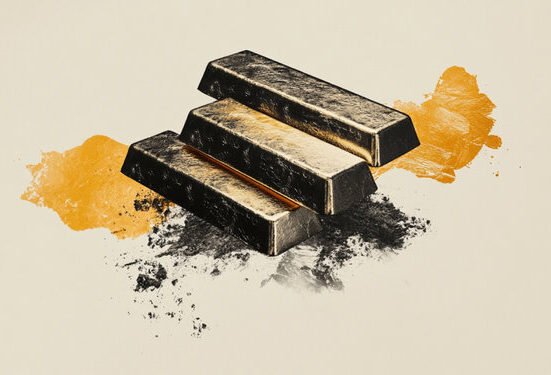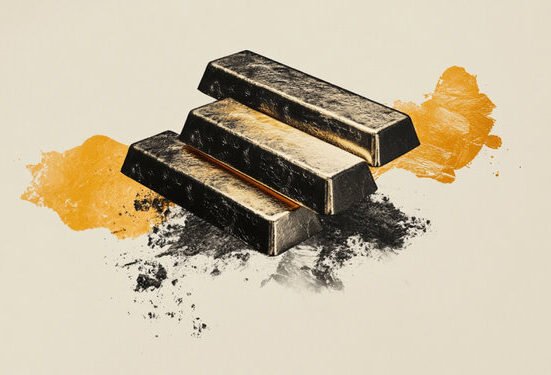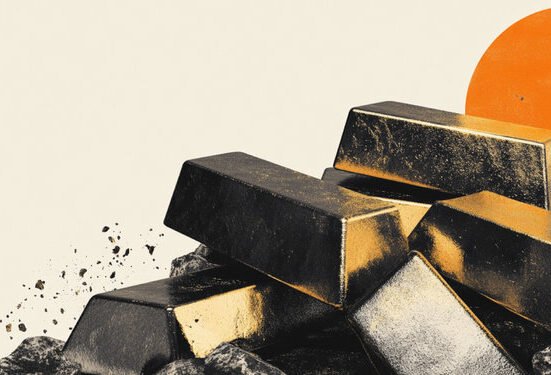Slaughterhouses in Brazil have become a target for armed robbers looking for a prized possession twice as valuable as the price of gold – a cow’s gallstone.
Cattle gallstones are one of the most treasured ingredients in traditional Chinese medicine as they are used to treat strokes stemming from an increasing problem of hypertension and obesity, the Wall Street Journal reported.
The body part has become so valuable that traders are willing to pay a whopping $5,800 for a single ounce of the hardened nuggets of bile – leading to a global hunt across the world’s top beef-producing regions.
But underground dealers dodging taxes and regulations along with armed gangs looking to hit big have quickly joined the game.
‘People hear about the high price tag and they’re starting to lose their minds,’ Daniela Gomes da Silva, a researcher at São Paulo State University, told the Wall Street Journal.
Selling gallstones isn’t illegal in Brazil, but the trade for the little rust-colored rocks has become a flourishing practice underground.
The savannah of Brazil is home to the globe’s largest cattle exporter – and these robbers are taking advantage.
‘I thought it was a joke at first,’ Rafael Faria, a police investigator in Barretos, told the WSJ.

Slaughterhouses in Brazil have become a target for armed robbers looking for a prized possession twice as valuable as the price of gold – a cow’s gallstone

The orange-colored hardened cattle gallstones are one of the most treasured ingredients in traditional Chinese medicine as they are used to treat strokes stemming from an increasing problem of hypertension and obesity
The problem has become so rampant that Faria himself was recently called upon to probe a series of heists and frequent smuggling incidents as these traders attempt to get the stones to several buyers – including Hong Kong, Shanghai and Beijing.
Recently, armed robbers broke into a farmhouse in São João da Boa Vista – a municipality just a few hours’ drive away from Barretos, WSJ reported.
The criminals tied up the owners along with their six-year-old grandson before running off with $50,000 worth of stones.
In September of 2024, two Uruguayan siblings were sentenced to prison for trafficking more than $3 million in gallstones to Hong Kong without declaring them to the authorities, New Vision reported.
A 50-year-old man along with his 48-year-old sister acquired the stones from slaughterhouses in Uruguay – home to the highest number of cattle per capita in the world with more than three cows for each of the country’s 3.5 million residents.
Additionally, slaughterhouse employees in Brazil and Queensland – Australia’s top beef-producing state – haven’t been innocent either.
Several workers have been locked up in recent years for snatching the stones while on the clock – even inconspicuously dropping them down their rubber boots to stay concealed.
In 2015, collections of cow gallstones began vanishing from a slaughterhouse in Australia – prompting raids and investigations in the area.

The body part has become so valuable that traders are willing to pay a whopping $5,800 for a single ounce of the hardened nuggets of bile – but underground dealers dodging taxes and regulations along with armed gangs looking to hit big have quickly joined the game

Official firms such as Oxgall – a Brazilian trading company based in the center-west state of Goiás – usually buy the stones from slaughterhouses and farmers
The Toowoomba Stock and Rural Crime Investigation Squad raided a property in Cranley – a rural locality in the Toowoomba Region of Australia – in May of 2015.
A 38-year-old man was arrested and charged after the raid for stealing the valuable lumps of theoretical gold.
Official firms such as Oxgall – a Brazilian trading company based in the center-west state of Goiás – usually buy the stones from slaughterhouses and farmers.
But the quality and price of the stones can vary, with chestnut brown rocks considered the purest form of the body part.
‘On average, we pay between $1,700 and $4,000 an ounce,’ José de Oliveira, chief executive of Oxgall, told the WSJ. In other words, the single stone can be worth more than all of the meat on the cow.
To avoid highway heists, the stones are often transported inside Brazil by plane before they are vacuum-packed and sent off to Asia to be used in China’s $60 billion traditional medicine industry.
But producers who operate illegally ship the stones out in a variety of forms – hiding them in jars of jam or even children’s toys to avoid any regulations.
Though rare, fraudsters may even add finely ground-up bricks or inject sugar into the center of the stones to increase their weight and worth.

Several slaughterhouse workers have been locked up in recent years for snatching the stones while on the clock – even inconspicuously dropping them down their rubber boots to stay concealed

Recently, armed robbers broke into a farmhouse in São João da Boa Vista, Brazil, and tied up the owners along with their six-year-old grandson before running off with $50,000 worth of stones
Although gallstones are something people in most countries would be happy to part with, farmers – and of course, criminals – have spoke highly of the size of the stones they have discovered from the underbellies of their cattle.
But not all cows develop a gallstone in their lifetime, though it’s a mystery why.
‘If I knew one of them had a gallstone, I’d kill the lot of them myself,’ Pedro Benetti, a ranch hand in Brazil, told the WSJ.
One worker in Brazil – who is responsible for slitting open the gallbladders in a high-security room at the back of the slaughterhouse surrounded by security cameras – typically only finds one stone out of every 100 animals that are slaughtered.
And although most of the cash goes to the owners of the slaughterhouse, he pockets a small percentage of every rock he finds.
‘Sometimes it’s worth more than my monthly salary,’ he said. ‘It’s very dangerous, once we get it out it goes straight into the safe.’
The high-stake treasure hunt, especially across Brazil’s savannah, has become so frantic that some producers have questioned how they could give their cattle gallstones.
Although there is still a large percentage of the market that still operates outside the law, the data surrounding the scale of the industry is vague.

The use of cattle gallstones in traditional medicine has been practiced for thousands of years and is still widely used in China – oftentimes with the collaboration of Western medicine

Not all cows develop a gallstone in their lifetime, though it’s a mystery why – sometimes only one gallstone is discovered in every 100 cows that are slaughtered
But the data does show that exports to Hong Kong – the most common stop-off point to China from Brazil – suggest a dramatic expansion of the market, WSJ reported.
Hong Kong’s imports of the stones have almost tripled in value – going from $75.5 million in 2019 to a whopping $218.4 million in 2023.
Additionally, Brazil was the top supplier of stones to Hong Kong in 2023 – accounting for two-thirds of all exports to that city followed by Australia, Colombia, the US and Paraguay.
The use of cattle gallstones in traditional medicine has been practiced for thousands of years and is still widely used in China – oftentimes with the collaboration of Western medicine.
Preparing the body part is considered a fine art – once harvested, the stones are carefully cleaned and left to dry for weeks before they are crushed down.
In China, the powder result is usually mixed with other ingredients from powdered buffalo horn to realgar – a reddish gemstone that contains arsenic – before it is pressed into a pill.
Other benefits of cattle gallstones and the manmade pill include helping in lowering fevers and treating infections.
A recent study on rats at Hong Kong University found evidence that the pills can also delay the effects of an ischemic stroke – a stroke in which a clot cuts off any blood flow to the brain.

The high-stake treasure hunt, especially across Brazil’s savannah, has become so frantic that some producers have questioned how they could give their cattle gallstones

In 2015, collections of cow gallstones began vanishing from a slaughterhouse in Australia – prompting raids and investigations in the area

Other sketchy markets for cattle gallstones have even been seen on social platforms such as Facebook, where sellers promote their stock of the hardened nuggets to their thousands of followers
Researchers also found that several ingredients in the pill protected the membrane surrounding the brain – giving stroke victims a possible extra 30 minutes to seek medical treatment before suffering from irreversible and sometimes fatal brain damage.
The powder from cow’s gallstones have become a massively-desirable item in China, as strokes have become the leading cause of death – some 178 people out of 100,000 die each year.
Some conservationists have placed the blame on Chinese medicine for a rise in wildlife trafficking because the substance is often packaged with parts from endangered species.
But either way, gallstones are becoming increasingly more rare in Brazil as the country becomes wealthier with more efficient farms.
Experienced farmers who can afford higher-quality feed oftentimes send their cattle to the slaughterhouse in less than two years.
Although it leads to more meat and milk production, there are typically fewer gallstones – a trend that could give an explanation into why the US exports relatively few stones.
Brazil’s farmers would be best to stick to what they know already – milk and beef – according to da Silva.
Da Silva also cautioned these producers about the mythical tales spreading across the savannah – million-dollar gallstones the size of footballs.
Other sketchy markets for cattle gallstones have even been seen on social platforms such as Facebook, where sellers promote their stock of the hardened nuggets to their thousands of followers.







